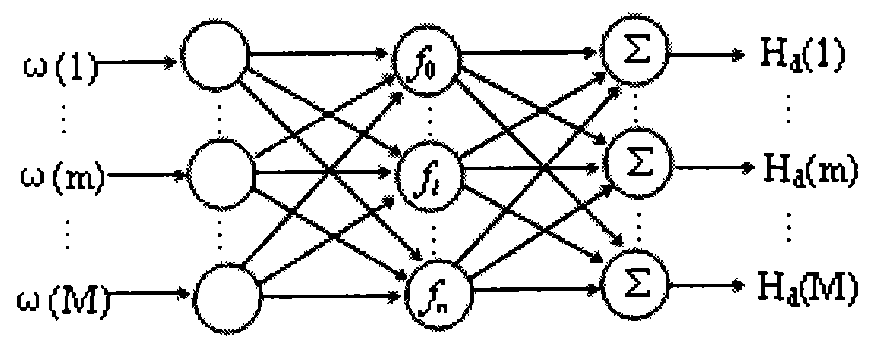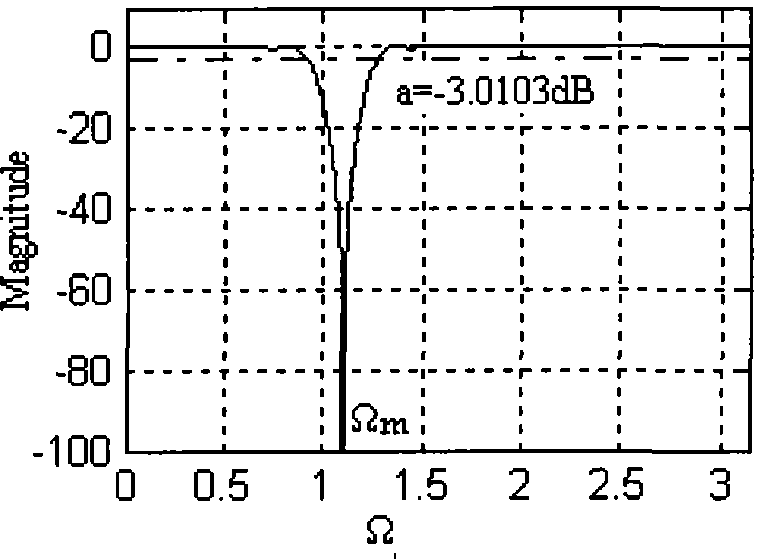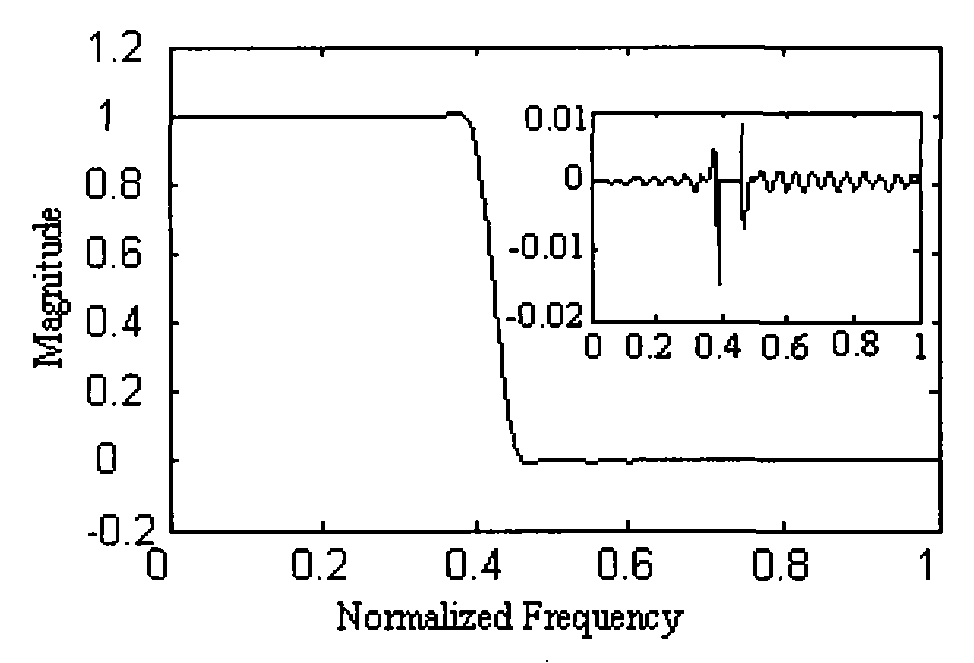Design method of high-order limited impulse response digital filter
A technology of digital filter and impulse response, which is applied in the direction of digital technology network, impedance network, biological neural network model, etc., to achieve fast calculation speed, small passband fluctuation, and wide application prospects
- Summary
- Abstract
- Description
- Claims
- Application Information
AI Technical Summary
Problems solved by technology
Method used
Image
Examples
application example 1
[0025] In order to facilitate comparison and verification of the effectiveness of the method of the present invention, the present invention is based on the literature [Pavel Zahradnik and Miroslav Fast analytical design algorithms for FIR notch filters], IEEETrans.Circuits and Syst.I, vol.51(3), pp.608-623, 2004] as an example, design an 80-order notch frequency Ω m = 0.35π finite impulse response notch filter.
[0026] First set N=81, ε=+10 -10 ,Η=0.0244, and sample uniformly in Ω∈[0,π] To obtain 41 training samples, for example l = 0, 1, 2, ..., 40, and set the initial weight to be random.
[0027] In order to make the pass band and stop band free of overshoot and fluctuation, two samples are taken in the transition band, and their amplitudes are 0.78 and 0.25 respectively. According to the above steps, after 21 trainings, the neural network converges, and the amplitude-frequency response of the designed finite impulse response notch filter figure 2 . The actual notch filter...
application example 2
[0035] In order to facilitate comparison and verification of the effectiveness of the method of the present invention, the present invention uses the document [Soo-Chang Pei and Peng-Hua Wang. Design of equiripple FIR filters with constraint using a multiple exchange algorithm, IEEE Trans. Circuits and Syst. I, vol. .49(1), pp.113-116, 2002] as an example, design a 77-order finite impulse response with a pass band of [0, 0.4π] and a stop band of [0.45π, π]. Pass filter.
[0036] Let N=78, ε=+10 -5 ,Η=0.02564, and uniform sampling in Ω∈[0,π] To obtain 40 training samples, for example l = 0, 1, 2, ... 39, set the initial weight of the neural network to be random, and take two samples in the transition zone, the amplitudes of which are 0.78 and 0.25, respectively. After 12 trainings, the neural network converges, and the amplitude-frequency response and amplitude-frequency response error of the designed finite impulse response filter can be seen image 3 . It can be seen from the...
application example 3
[0044] To facilitate comparison and verification of the effectiveness of the method of the present invention, the present invention takes Example 2 in the document [IEEE Trans.Circuits and Syst.I, vol.49(1), pp.113-116, 2002] as an example, and designs a 78-order low-pass frequency response linear phase digital differentiator. The low-pass differentiator has an ideal frequency response jΩ in the low frequency band and a zero frequency response in the high frequency band. And the low frequency band boundary frequency is 0.8π, and the high frequency band boundary frequency is 0.85π.
[0045] Let N=79, ε=+10 -10 ,Η=0.05, and uniform sampling in Ω∈[0,π] To obtain 40 training samples, for example The initial weight of the neural network is assumed to be random, and two samples are taken in the transition zone, and their amplitudes are 2.0 and 0.6 respectively. After 5 times of training, the neural network converges, and the amplitude-frequency response and amplitude-frequency respo...
PUM
 Login to View More
Login to View More Abstract
Description
Claims
Application Information
 Login to View More
Login to View More - R&D
- Intellectual Property
- Life Sciences
- Materials
- Tech Scout
- Unparalleled Data Quality
- Higher Quality Content
- 60% Fewer Hallucinations
Browse by: Latest US Patents, China's latest patents, Technical Efficacy Thesaurus, Application Domain, Technology Topic, Popular Technical Reports.
© 2025 PatSnap. All rights reserved.Legal|Privacy policy|Modern Slavery Act Transparency Statement|Sitemap|About US| Contact US: help@patsnap.com



